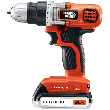More popular in regions where the air is hot and the humidity low, an evaporative cooler—also called a swamp cooler—is a machine that cools the air by means of evaporating water. Unlike an air conditioner that uses refrigeration to cool or condition the air, a swamp cooler creates a humid air situation, and the evaporation of the air cools the air, much as what happens to our bodies when we perspire to cool our skin.
Just as with an air conditioner, however, a swamp cooler must be prepared for, and possibly stored away during, protracted cold weather. To prevent rust, mineral buildup, and encourage cooling panel health, follow these steps for preparing your swamp cooler for cold weather:
It is important to cover your swamp cooler when it is not in use. Not only will the cover assist in protecting the machine, it can also slow down the loss of heat from your home and reduce outside noise that could channel back into your home through ductwork. If your swamp cooler is located on your roof, be sure that you follow ladder safety measures when preparing your cooler for winter.

MAX Power! A powerful lithium-ion drill/driver that delivers 0-to-650 RPM and 115 inches-per-pound of torque in a lightweight, easy-to-use package. An anti-slip soft grip and LED worklight makes this tool a delight to use. Check out Black & Decker 20-Volt Cordless Drill/Driver today!
Whether your furnace is electric or gas, down flow, up flow or horizontal, your furnace uses a filter. Designed to trap ...
Discover MoreChoosing efficient air filters is one of the most important processes that a homeowner can do to ensure that their HVAC ...
Discover MoreAre you tired of having a hot home and high energy bills during the summer months? Learning how to naturally cool your ...
Discover More2017-11-26 15:54:18
Leonard
After owning and servicing evap coolers for more than 50 years it occurs to me that covering during winter may be counter-productive.I have taken care of (summer set-up and winterize) a new cooler for three years now and have not covered it and see no rust or additional calcification in the spring. I have come to expect rusting and paint peeling in those that I have covered.
Since the most intense weather it will receive is in the summer it doesn't really serve much protection but will contain moisture so rust can continue uninterrupted. The insulating aspect is minimal if a damper is used to shut vent entry.
I have been coating the entire cooler with a water displacement layer (WD40 or the like) and will continue this practice.
Please respond with your thoughts.
Thanks,
Leonard
Copyright © 2025 Sharon Parq Associates, Inc.
Comments